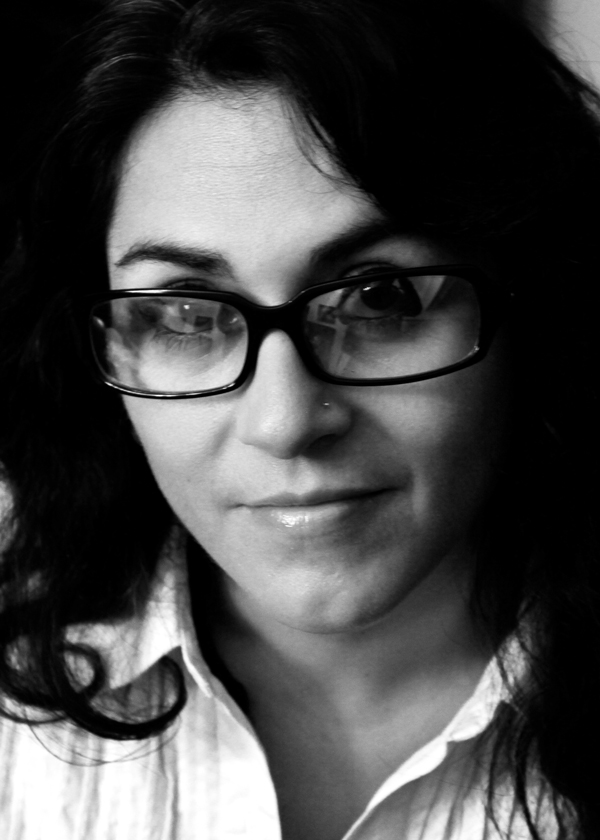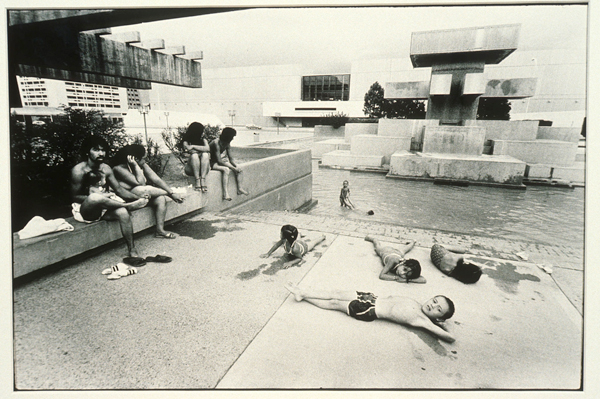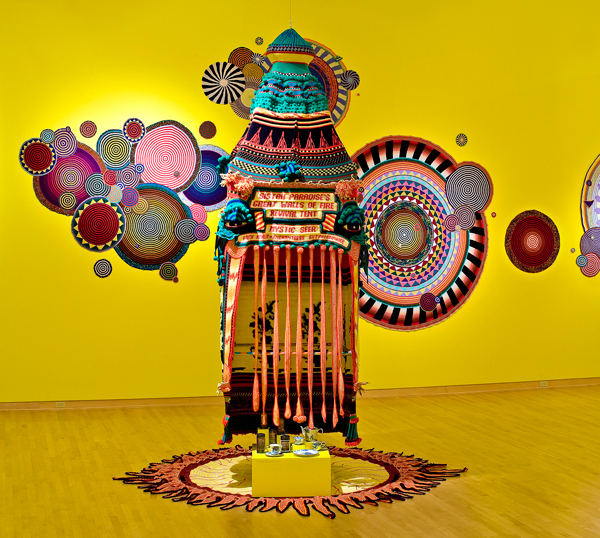I recently interviewed curator Rocío Aranda-Alvarado of New York’s El Museo del Barrio at the opening of Site Santa Fe’s current biennial, “Much Wider Than A Line.” Rocío was part of a team of five curators for this Site’s ongoing focus on contemporary art from the Americas. We spoke at length in person, then through email several times after I left Santa Fe. Most of the interview came from those exchanges. The process took place over a 10-day period and for both of us was quite engaging as we came to a point of understanding and interest in various areas of concern.
CLAYTON CAMPBELL: “Much Wider Than A Line” has three themes: Vernacular Strategies, or the importance of vernacular sources; Indigenous Understandings, manifested in performance and ritual; and Shared Territories, through questions surrounding race, identity, borders and emerging de-colonizing practices. The breadth boggles the mind and I am wondering how you approached them?
ROCÍO ARANDA-ALVARADO: I think probably Margarita Cabrera illustrates these ideas most directly for LA audiences. She has been working with the border in a very direct way for many years. I also think of Juana Valdes, Xenobia Bailey and Miguel Gandert.

Aranda-Alvarado, photo by Andrew Demirjian.
First, it was important to me to include black artists in the show, which is why I nominated Juana and Xenobia. I am continually disappointed by the numbers of women artists and artists of color nominated for large international shows like this one. In the Caribbean and the Americas, especially, these omissions are constant, but they also continue to be a problem in the U.S.
Juana’s work is about how skin color affects every aspect of one’s life. Her works explore labor, invisibility, and struggle. One of my favorite works of hers is a series of prints that on the surface seem to be about idiomatic expressions but are really about how skin color is a decisive factor in the development of one’s daily lived reality. Her “China Rags” series proposes the use of fine bone china as the material through which to explore the relationship between labor and skin color.

Miguel Gandert, A selection of photographs from the Varrio San Jose project (1982–86) and The Essential Landscape: The New Mexico Photographic Survey (University of New Mexico Press for the Museum of Fine Art, Museum of New Mexico, 1985) Bathers, First Plaza, Albuquerque, 1983, Archival Digital Prints, Courtesy of the artist
With your focus on people of color and the body, I am wondering then how this might extend into this present moment of social and political upheaval in the Americas? Are the artists who are the elders in the show having a galvanizing effect, or some other effect on younger artists—and what might those be?
Xenobia Bailey’s work is about funk, the wholly American musical form, and how it represents an important black contribution to a larger American aesthetic that is not just musical but visual. After learning how to crochet, Xenobia began creating large-scale works that adapted color and design and the traditional crochet to explore the aesthetic of funk—which we can read as blackness—in large-scale installations.
Finally, Miguel was an important addition to the exhibition not only because he is a local artist but, more importantly for me, he explored—in a parallel way—the experience of black, chicano/hispano/indio communities in Albuquerque in the 1980s. To me, his work is a key element, illustrating how artists are always the first to understand the importance of things like race and difference affecting the “American” experience.
With the focus on the Americas in this set of biennials, it seemed crucial to me to explore the body as a political site. I think it is essential to consider skin color, ethnic background and the physical location of the body in terms of geopolitical borders and how these factors mark the body in a definitive way.

Margarita Cabrera, Space in Between—Saguaro, 2010–2012, in collaboration with Maria Lopez, border patrol uniform fabric, copper wire, thread and terra cotta pot, courtesy of the artist, photo by Fredrik Nilsen.
I’m interested in the legacy of the artist’s ideas as they pass them along in an evolutionary way. And the public becomes aware of histories that have been obscured or hidden (as you say, so many women remain unrepresented in exhibitions). What tangible lessons do you think are learned, aside from aesthetic experiences gleaned from these kind of large surveys?
I like your idea of unseen histories. I think the artists in the show are sharing these unseen histories in varying degrees. Also, the concerns that the artists in the show deal with are not only regional. The work by Miguel Gandert and Graciela Iturbide demonstrate how in both Mexico and the United States, there has been official interest on the part of the state to document segments of its population in order to study its characteristics and the effects of social, political and economic changes on these groups. It also underscores how ludicrous it is to build a wall between places that share centuries of history and culture.


